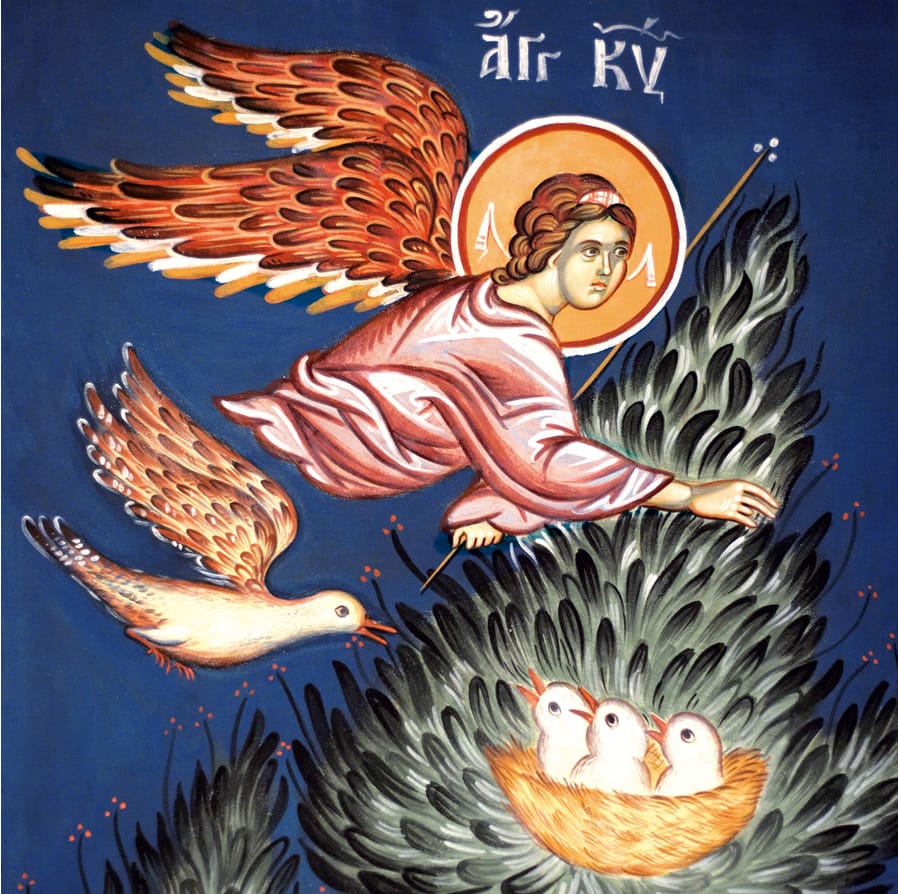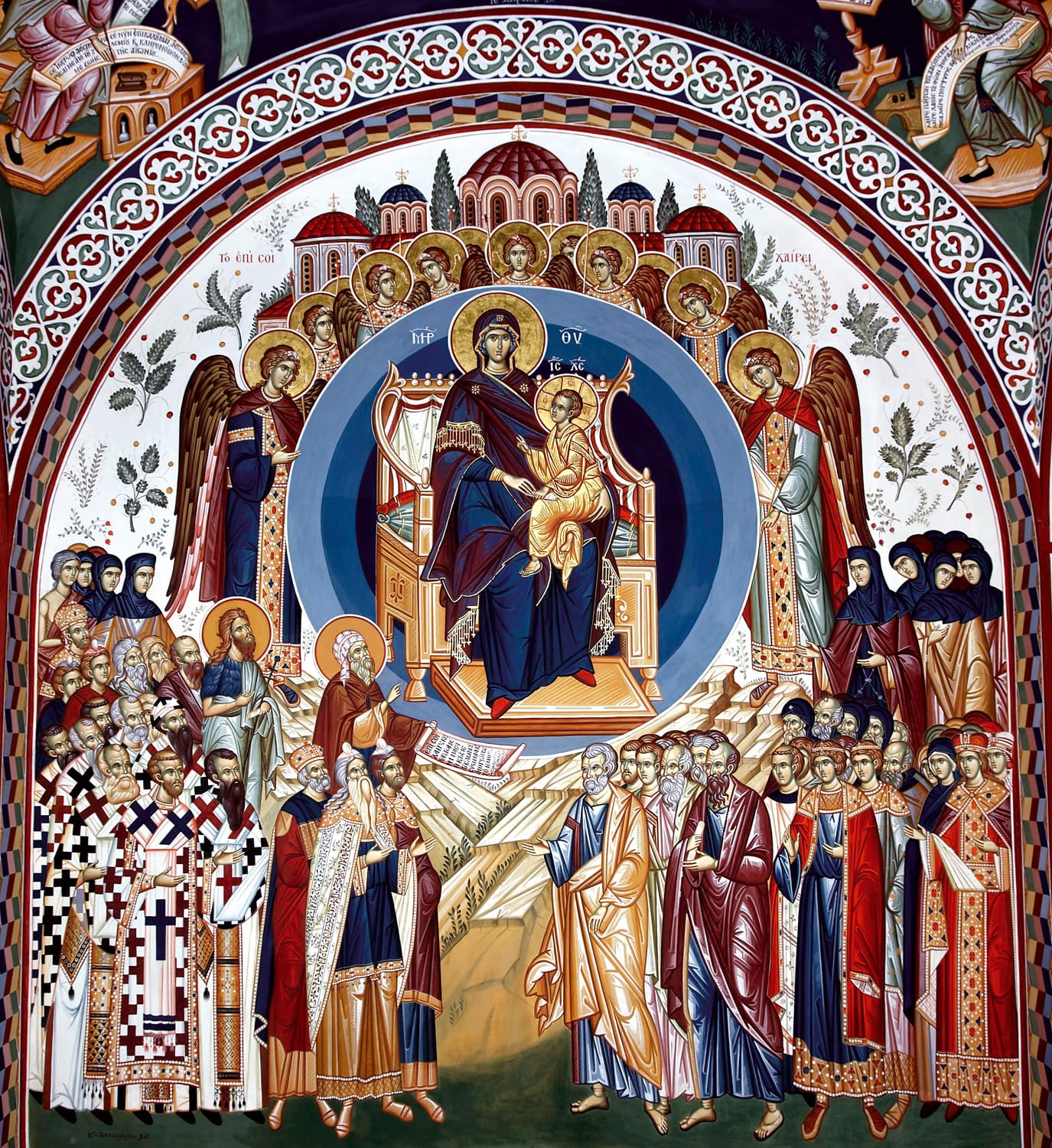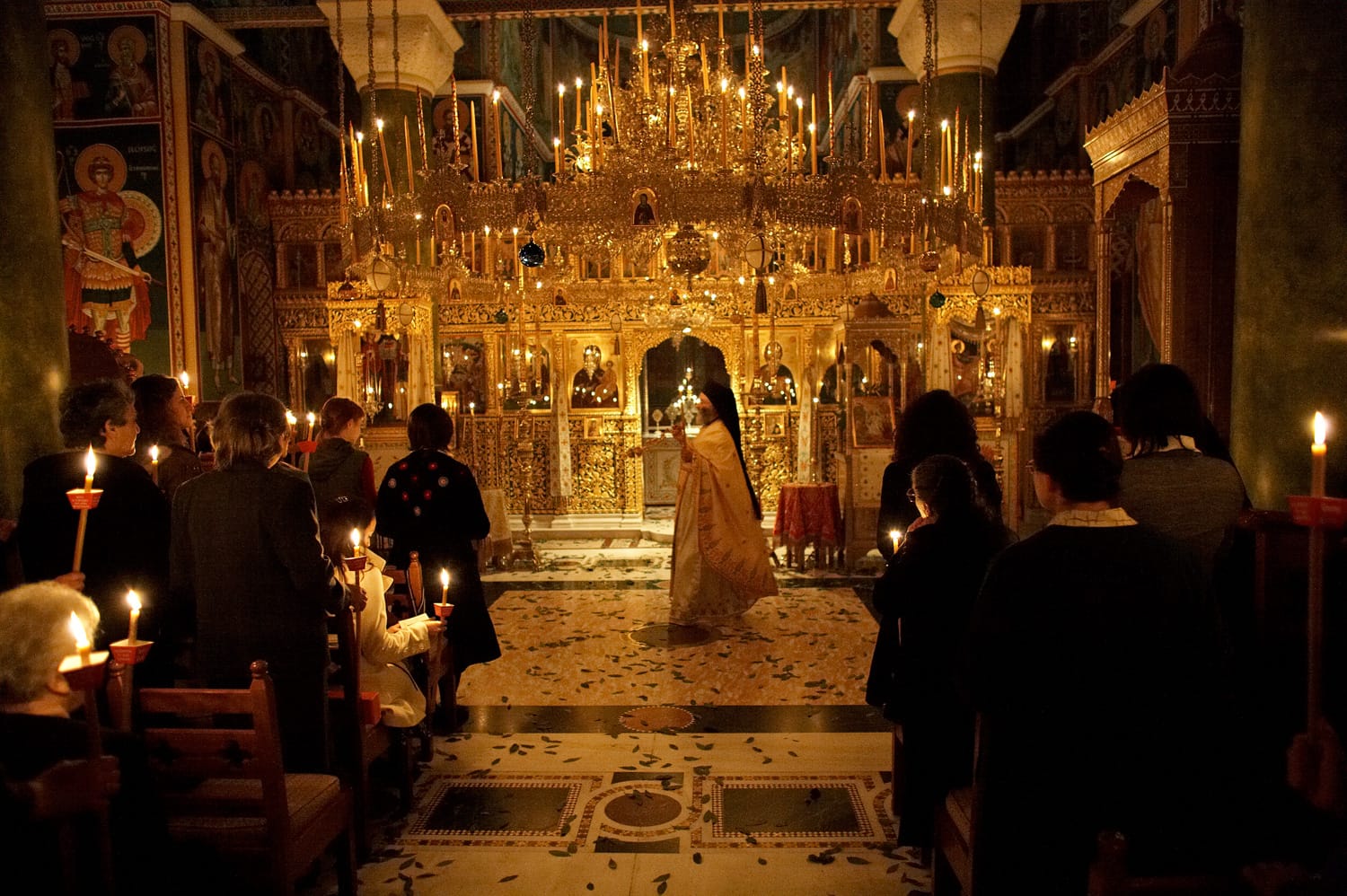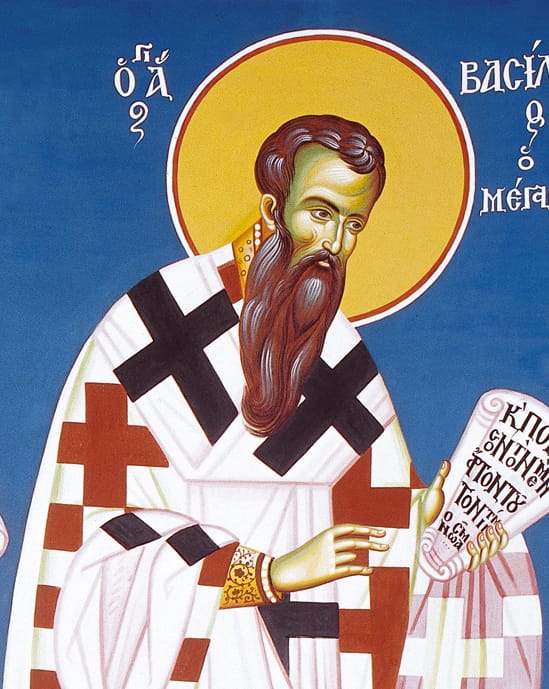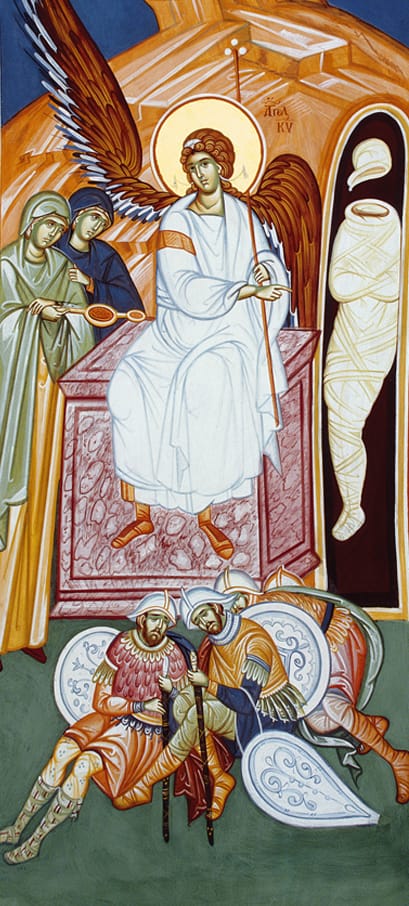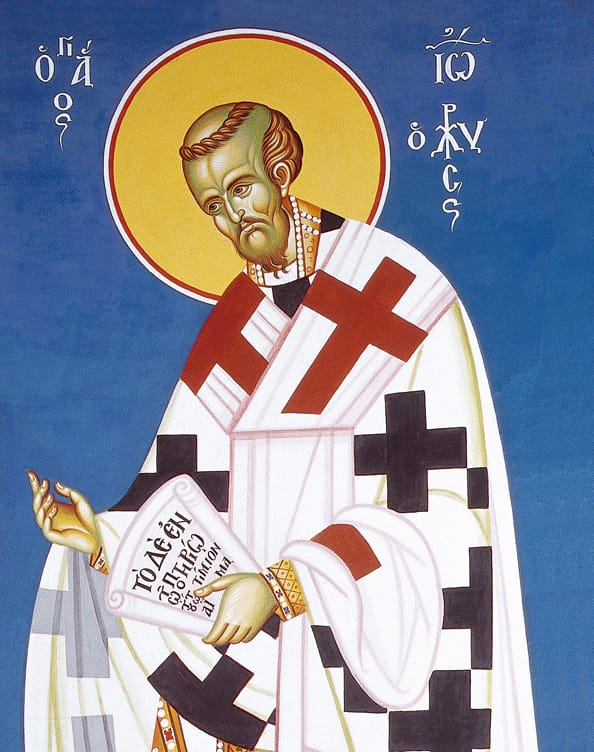The Katholikon
The Katholikon of the Convent is dedicated to the Annunciation. A mosaic of Mother Mary, ‘The Joy of All’, crafted at the workshop of the Convent and placed above the main entrance, welcomes visitors. The marble founder’s [ktitor] inscription below the mosaic reads as follows: THIS CHURCH OF THE ANNUNCIATION WAS ERECTED FROM ITS FOUNDATIONS WHEN THE HEAD OF THE HOLY MONASTERY OF SIMONOPETRA OF MT. ATHOS WAS SERVED BY THE REVEREND ARCHIMANDRITE AIMILIANOS AND THE OFFICE OF THE MOTHER SUPERIOR OF THIS MONASTERY OF ORMYLIA WAS SERVED BY THE HOLY REVEREND MOTHER SUPERIOR NIKODEME (1982-1987).
Persistent reproduction of old motifs, particularly so as to meet the needs of interior decoration of the Katholikon, led to the study and establishment of crafts workshops at the convent, such as those of marble floor works, wood carving for the iconostasis and painting for the murals.
The entrance to the church leads to the external narthex. Ahead of it opens the Narthex [Lite] and, further on, the nave and the Sanctum.
The patterned marble floor was designed by the sisters who participated in and supervised its construction and inlay placements. White marble from Mt. Penteli has been harmoniously combined with other colourful marble types brought from various parts of the globe.
An impressive feature is the huge new chandelier with the sphere symbolising the earth suspended below, under God’s eye. God’s hand, below the sphere, extends in the blessing sign. The ‘Saints’ Choir’ surrounds the composition without touching it; on Great Feasts, the Saints depicted rotate around the chandelier in a joyous circular dance.
The wood-carved iconostasis of the Katholikon is commensurate with the most famous ones painted and admired around the world. Initial designs started in 2000 based on the figures and compositions of Mt. Athos Monasteries, and, mainly, on those of the Protaton. As with all artistic works undertaken at the Convent, in this case various other versions and depictions of the same scenes through time were also studied in addition to the study of the iconostasis at the Protaton. The Annunciation appears on the door to the sanctum, while the alternating parapets of the iconostasis are adorned with vines and birds on one side and vases with flowers[anthemia] on the other. In-between there are water springs with birds and vines similar to those spiralling up the pillars. The perforated arched beams above the doors present the 12 Great Feasts of the year, in excellent forms, with leaves and flowers [anthemia] above the sequence, which is flanked with two dragons holding the Passion scenes [‘lypitera’].
All icons adorning the Katholikon were exclusively made by the nuns. Since the icon painting workshop was first established, the sisters have been systematically studying Byzantine mural painting so as to acquire deep knowledge of its spirit and technique. For a number of years, the sisterhood sought for the ideal method that would allow sound mural preservation, similar to what has been preserved through the centuries in dining halls and Katholikon churches of Mt. Athos monasteries.
The operation of the Diagnostic Artwork Centre at the Ormylia Foundation, which emerged from this very quest, revealed the secret craftsmanship of Byzantine artists and paved the way for using methods that are implemented relatively quickly while achieving excellent results. So, in November 1996, the founder’s work of painting the murals of the interior of the Katholikon at Ormylia started, based on the technique of the Macedonian school as used at the beginning of the 14th century.
The greatest part of the mural work was completed in a decade. When entering the Katholikon, the pilgrims’ eyes encounter a composition of scenes and presentations characterised by harmony and luminosity. The mural painting started with the impressive Pantocrator in the cupola, surrounded by a circular inscription of the following prayer: “BLESS YOUR VINE, THE FLOCK OF ORMYLIA, WHICH YOU MIRACULOUSLY PLANTED, LORD PANTOCRATOR, AND HARVEST ITS GOOD FRUIT IN PARADISE, WHEN YOU JUDGE YOUR PEOPLE, MERCIFUL LORD.”






